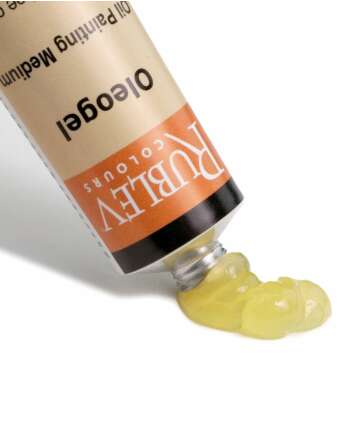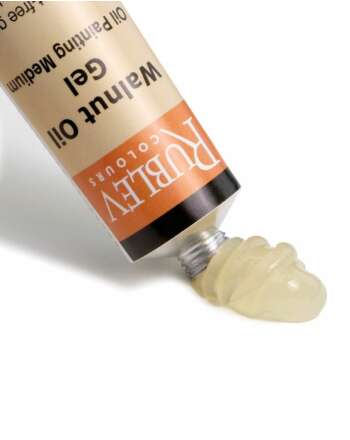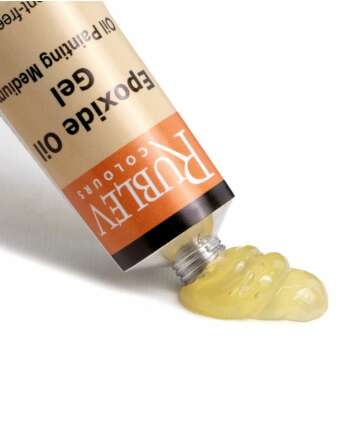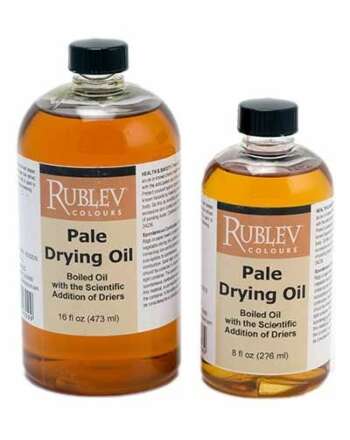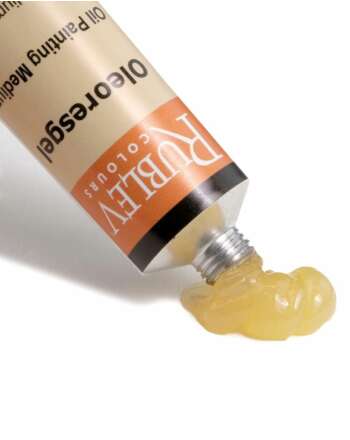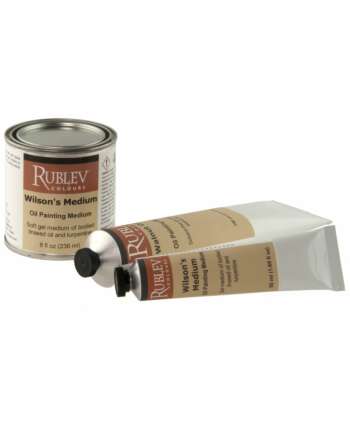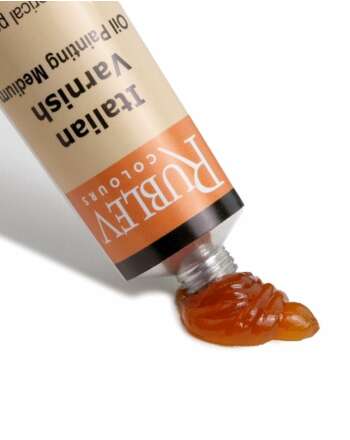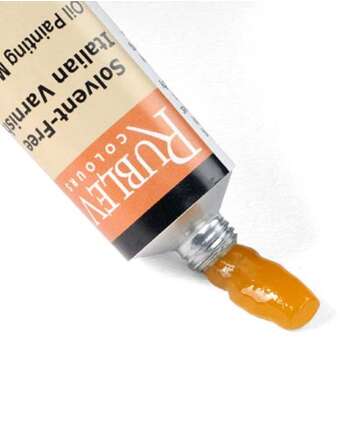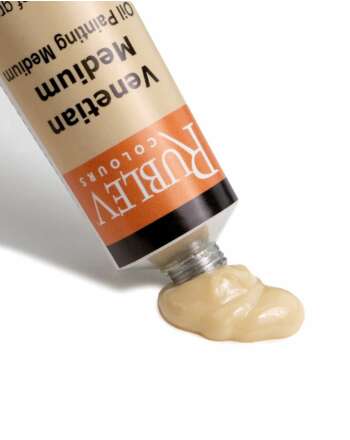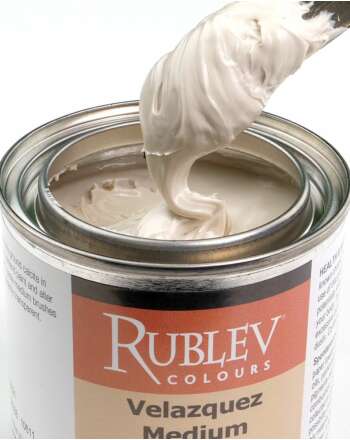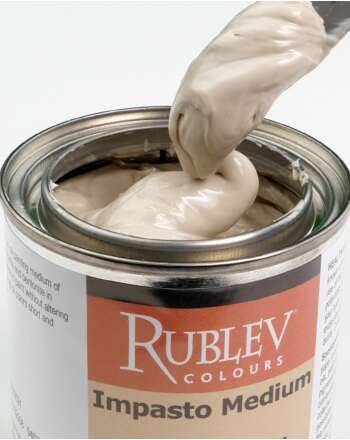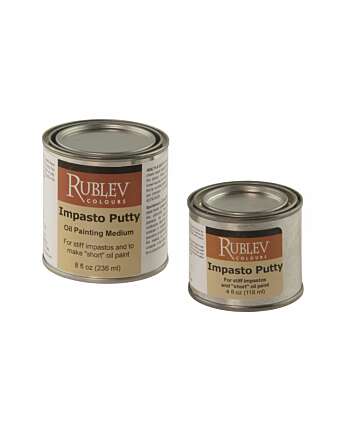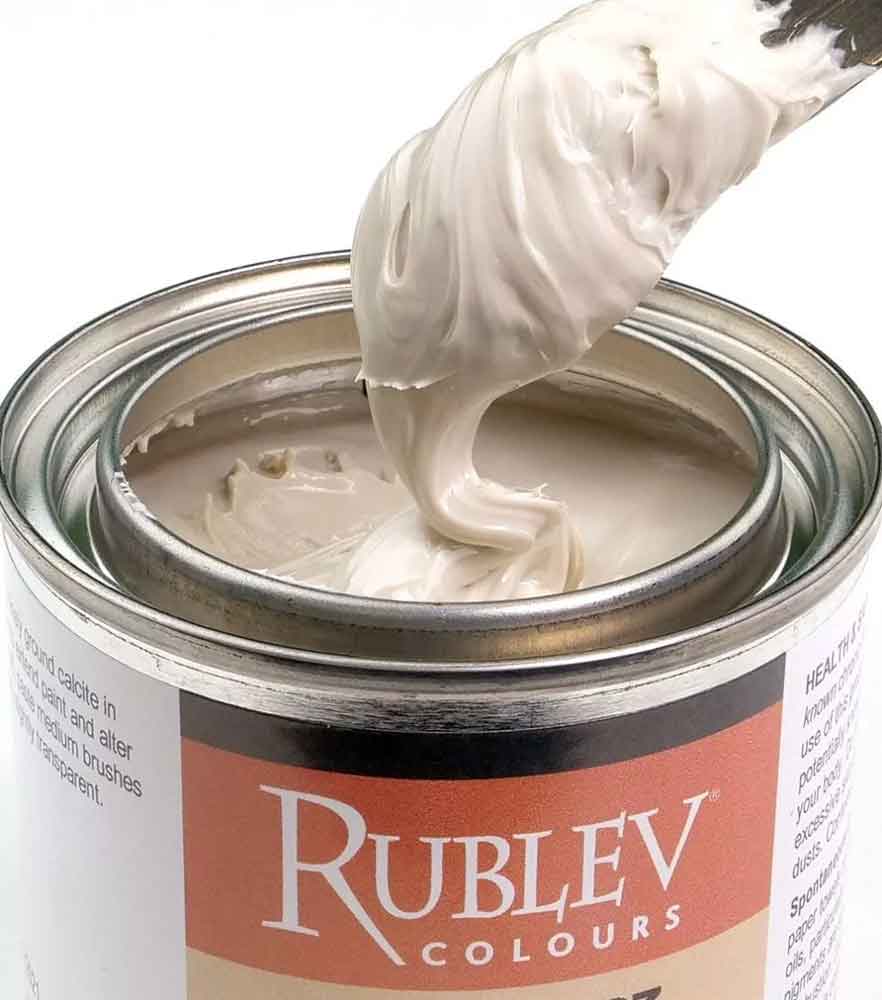When you need oil paint to create an effect you cannot otherwise achieve with paint alone, oil paint mediums can modify the paint to achieve those effects. Drying time and viscosity vary between colors — even from the same range or brand. Oil paint mediums can increase or decrease drying time and viscosity. Each medium has unique properties — so different effects can be achieved depending on which medium you mix into your paint. You can thicken paint, thin paint, give it a matte or gloss finish, soften the paint, level out the brush strokes, or give your paint more body and texture.
Rublev Colours® Oil Painting Mediums: Transform Your Oil Paints
The Best Mediums for Oil Painting
Oil paint mediums are amendments to oil paint. They contain additives that alter the functional properties of paint. Additives include solvents, oils, waxes, resins, extender pigments, and other substances to change the consistency of paint. The mediums typically comprise a binder and a solvent that make a paint vehicle. Oil paint consists of pigment and binder, but an oil paint medium consists of a binder and sometimes solvent or extenders.
Oil makes a slow-drying paint consisting of pigments in a drying oil, commonly linseed oil. The viscosity of the paint may be modified by adding a solvent, such as turpentine or mineral spirits (white spirits). Solvents thin oil colors and improve flow. They can also be used as brush cleaners and to remove oil paint from surfaces. Contrary to popular belief, solvents are not necessary for cleaning brushes.
Using mediums in oil painting is not always necessary, and many successful paintings have been created without mediums. Oil paint mediums can help you achieve various effects in your painting. You can alter the texture of the paint, quicken the drying time, increase oil paint’s transparency, and more.
The most basic medium is a drying oil. Linseed oil is often used, but slower-drying oils, such as walnut, poppy seed, and safflower oil, can be used as an oil paint medium. Read Drying Used in Painting to learn more about oils as mediums.
and Extenders increase the viscosity of oil paint so that you can apply it in thicker layers. Read Creating Impastos in Oil Painting to learn how to use paste mediums and extenders to build impastos.
are sometimes used to thicken paint to create a buttery texture. However, using wax in oil paint can lead to problems when it comes time to clean paintings. Read the article Should Oil Painters Use Resin-Based Mediums such as Dammar and Maroger? to learn more about wax and resins in oil painting.
Frequently Asked Questions
Why use an oil paint medium?
What medium is best for oil painting?
The best medium is also the simplest. Oil is the simplest medium for oil painting. The most commonly used oil is linseed oil. Viscous oils such as bodied oils (also called "stand oil") add body to oil paint and mediums but may require thinning with a solvent or with an oil, such as alkali-refined linseed oil, to reduce drag when brushing out. Bodied oils also increase the leveling and flow out and the gloss of oil paint.
Do you have to use mediums for oil painting?
Only use a medium when you need to create an effect in your painting that you cannot achieve with oil paint alone. Using mediums in oil painting is not always necessary, and many successful paintings have been created without mediums. If you require paint to dry faster, slower or be thinner or thicker, an oil paint medium is a good choice.
What do different oil mediums do?
Painting mediums affect oil colors differently. They modify the functional properties of paint, influence drying rates, increase transparency, and alter the surface quality (gloss to matte). The difference between one painting medium and the next is how they accomplish these effects.
Can I use oil paint without thinner?
Contrary to what many artists believe, using thinners with oil paint is unnecessary. Oil paint can be used from the tube without thinners or solvents, but without solvents, it may be necessary to change certain painting habits if you are accustomed to using them in your painting.
What can I use instead of solvents for oil painting?
Solvents are not required in oil painting, but they are useful for thinning and hastening the drying of oil paint. Linseed oil and gel mediums are useful to thin oil paint without solvents. Be aware that increasing the oil content of paint will increase the drying time and potential yellowing of oil paint.
How can I avoid using solvents to clean brushes?
The chemists' adage like dissolves like provides clues on alternatives for cleaning brushes. Vegetable oil — any vegetable oil — dissolves oil paint. Place the brush hair in vegetable oil to remove the oil paint. Next, wash the brush with soap and water to remove the oil. Any simple soap, such as Castile (olive oil based) or Ivory soap, without scents and other additives, works well. Do not use dishwashing liquid or detergents to clean brushes, as they are too harsh on natural and synthetic hairs.
What oils can I use for oil painting?
Linseed oil is the most common drying oil used in oil painting. Walnut, poppy seed, and safflower oil are also choices for oil painting. There are different types of linseed oil: alkali-refined, cold-pressed, bodied, and drying oil. Each oil has its unique characteristics and properties in paint.
What do artists use to thin oil paint?
The most common solvents to thin oil paint are turpentine and mineral spirits (white spirits). Other solvents, such as toluene, xylene, Stoddard solvent, etc., provide different properties and can also be used.
What other mediums can you use with oil paint?
Besides linseed oil, artists can use mediums like walnut oil, poppy seed oil, and safflower oil with oil paints. These alternatives affect the drying time and sheen of the paint differently.
What blending medium to use for oil paint?
A traditional blending medium for oil paints is a mixture of linseed oil and turpentine. This mixture allows for smoother blending and can be adjusted in proportion to achieve the desired consistency and drying time. For solvent-free painting, Velazquez Medium, Impaosto Medium, and Impasto Putty are excellent blending mediums without any solvents or hazardous ingredients and can be used in a wide range of applications, such as impastos, glazes, and smoothing brushstrokes.
Can I use oil paint without linseed oil?
Yes, oil paint can be used without linseed oil. Other mediums like walnut oil or synthetic alkyd resins can be used as substitutes to modify the properties of the paint.
What is a good substitute for linseed oil when painting?
Walnut oil and poppy seed oil are substitutes for linseed oil. They offer similar properties but with less yellowing over time and slower drying rates.
How long does linseed oil take to dry painting?
Linseed oil typically takes 24 to 72 hours to dry to the touch, depending on the thickness of the paint layer and environmental conditions. Complete curing may take several weeks.



